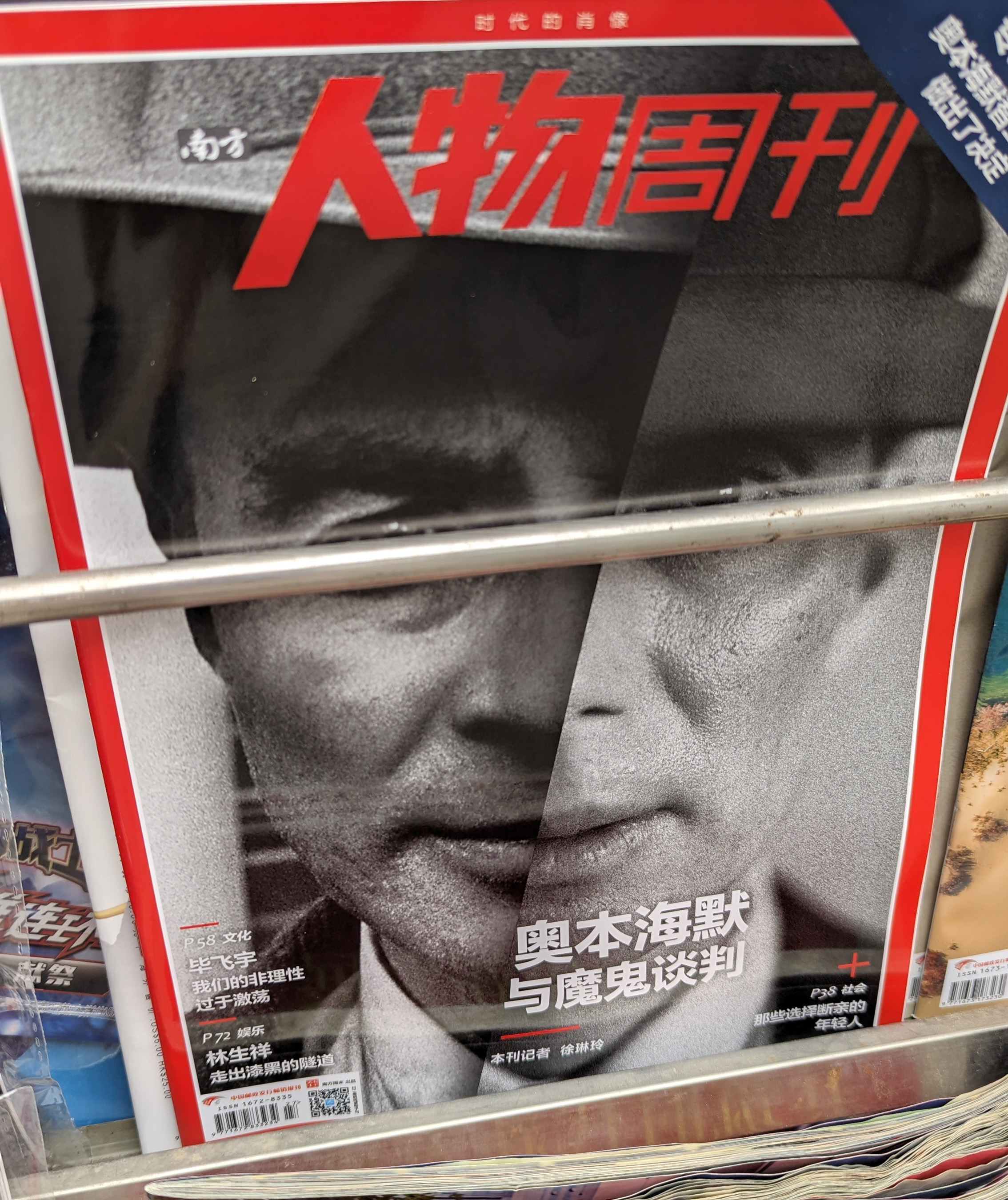
American film director Christopher Nolan’s eponymous biographical film about J. Robert Oppenheimer was recently released in China, where it has so far generated box office revenues of 300 million yuan ($40 million) and impressed audiences. While viewers relive the mid-20th century life of the father of nuclear bombs, their memories and fears of the Cold War and nuclear destruction have also been reawakened.
A name often associated with the Manhattan Project and the atomic bomb, Oppenheimer the man is at the center of a complex historical tale. He was one of the most famous victims of the political smears in the United States known as McCarthyism in the early years of the Cold War. His life was very much shaped by the politics, science and engineering development of his times. In the film, Oppenheimer is presented as being most troubled by the great destructive power of new technologies and worried about the possibility that he had opened a Pandora’s box that would lead to humanity’s destruction.
Today, history seems to be repeating itself. In 2018, then-president Donald Trump launched the China Action Plan, which targeted visiting Chinese scholars and American scholars who had China connections. False accusations have led to injustices and tarnished the reputation of many renowned American scientists. It is therefore regarded by many as the new edition of McCarthyism, named for U.S. Senator Joseph McCarthy who treated anyone with connections to communism as a traitor in postwar America.
As a result of Trump’s attacks, China-U.S. scientific and technological relations deteriorated rapidly. Many people believe that the two countries are in a new cold war in science and technology. The film “Oppenheimer” thus seems like a story about historical cycles.
Oppenheimer himself died in 1967. Five years later, the United States and the Soviet Union reached their first nuclear arms control agreement, which greatly reduced the chances of nuclear war. In parallel to the U.S.-Soviet process, groups of American scientists began visiting China in the 1970s. They became an important constituency in the normalization of relations. Thanks to the efforts of these people and others, China and the U.S. signed the Science and Technology Cooperation Agreement in 1979. It was an early harvest of institutional relationships.
From today's perspective, that agreement was far more important than its specific contents. On one hand, it was living proof that, even during the Cold War, major countries with different ideologies could create cooperative mechanisms in the field of science and technology. The people pushing for it faced political pressure similar to that on Oppenheimer. They, too, worried that the pursuit of scientific advancement for the benefit of mankind might be too high an ideal to stand the test of real politics.
On the other hand, the agreement generated results far beyond its drafters’ expectations and brought great and lasting momentum to the development of science and technology in both China and the United States. As the agreement was signed, virtually out of nowhere and with zero mutual trust, neither China nor the U.S. was sure how it would guide the domestic development of science and technology. Over the following four decades, the sci-tech field has been a splendid example of bilateral cooperation and mutual benefit, and the fastest sector to recover after diplomatic spats.
According to American data, from 1979 to 2021 more than 3 million Chinese people studied in the United States. Some of them stayed there to become important players in basic science development, while others returned to China with advanced technologies, experiences and innovative models. China-U.S. scientific and technological exchanges have powered innovative enterprises in China, and also forged closer links between relevant industries on both sides.
These positive effects partially resolved Oppenheimer’s concerns. Despite their differences in ideology or nationality, scientists must not be scared of cooperation aimed at promoting human progress. Even with very different national interests, the two major powers should still be able to build mutual trust through cooperation and mutual benefit. They should hedge and work to dispel each other’s suspicions about a sci-tech enabled arms race and jointly promote the global governance of scientific and technological threats. These successful experiences should not be lightly abandoned.
In recent years, some Americans have raised their voices against the China-U.S. Science and Technology Cooperation Agreement. They argue that the agreement no longer reflects the current state of two-way science and technology relations, that it is not practical and that the U.S. has been the losing party most of the time. These short-sighted views ignore the strategic role of the agreement in facilitating bilateral scientific and technological ties and underestimate the great risks of sci-tech competition in the absence of political assurance or historical experience. Despite various pressures, Chinese and American negotiators still want to hold on to the agreement and have made a temporary extension arrangement for the short term.
However, the all-clear has not been sounded. To extend the agreement beyond American election cycles, both sides must make determined efforts for some time to come. China and the U.S. should significantly increase exchanges between decision-making departments to make up for the gaps and trust deficits accumulated during the COVID-19 pandemic and problems caused by the China Action Plan. They should identify each other’s concerns as soon as possible and measure their paths to common understanding.
The two sides also need to exercise more patience and confidence toward reaching an agreement. They may wish to communicate in a more pragmatic and incremental manner, increase two-way transparency through joint working groups and focus on practical obstacles.
